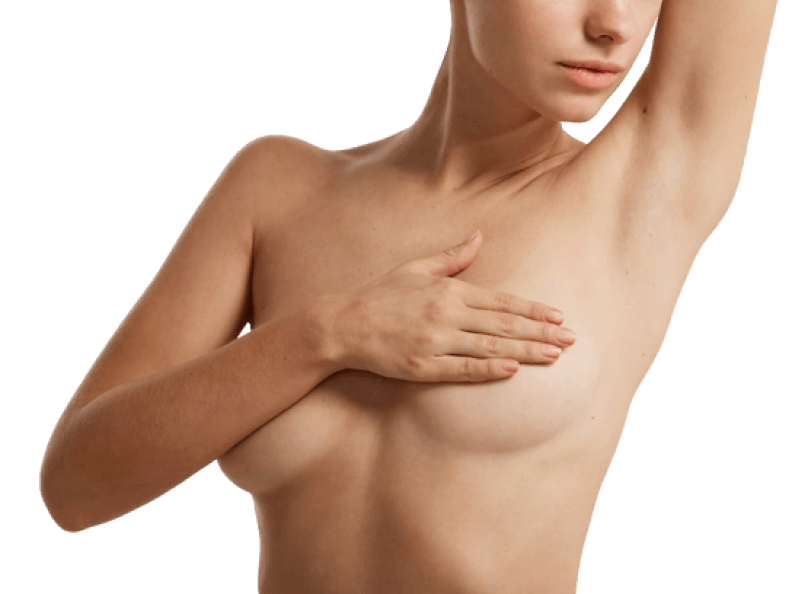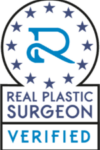Do you want to improve the appearance of your chest?

Breast augmentation with implants, or commonly shortened as ‘breast implants‘, is one of the most requested cosmetic surgery from our abroad patients. This procedure aims at enhancing the size and shape of a woman’s breast.
The best candidates for breast augmentation are women who are looking for a breast size increase, while keeping realistic expectations.
The technique of inserting and positioning the breasts implants will depend on your anatomy and our recommendation. The incision can be made either in the crease where the breast meets the chest, around the areola (the dark skin surrounding the nipple), or in the armpit (axillary approach).
Every effort will be made to assure that the incision is placed so resulting scars will be as inconspicuous as possible. Most of our patients choose the transaxillary approach –Dr.Benito is a worldwide specialist in the axillary approach– because the scar is completely hidden and the breast tissue and areola are not disturbed. However some women prefer to have the incision in the areola or in the inframammary fold rather than in the armpit. That way, working through the incision, the breast tissue is lifted to create a pocket, either directly behind the breast tissue or underneath your chest wall muscle (the pectoral muscle). The implants are then centered beneath your nipples. Placement behind the muscle however may be more painful for a few days after surgery than placement directly under the breast tissue. The surgery usually takes one to two hours to complete. Placement behind or in front the muscle is chosen depending on your frame, tissue thickness and physical activity.Nowadays there is no real difference regarding complications and outcomes between both techniques. In fact many times we combine both placement, known as “dual plane”.
Breast augmentation is relatively straightforward. But as with any operation, there are risks associated with surgery and specific complications associated with this procedure, that we will thoroughly explain to you during consultation.
A breast implant is a silicone shell filled with either silicone gel or a saltwater solution known as saline. At our cosmetic surgery clinic in Barcelona, The results with these breast implants are superior to saline implants.The type of implant (round or anatomic) depends on the goal to be achieved and the patient’s desires. We will recommend the best shape for your case. Nowadays, because of some issues with texturing (seroma, BIA-ALCL), we only use micro- or nanotextured implants.
You should be able to return to work within a few days, depending on the level of activity required for your job. You can resume your work in 3-4 days, and moderate physical exercise in 10 days. After several months, your scars will begin to fade, although they will never disappear completely. Routine mammograms should be continued after breast augmentation for women who are in the appropriate age group, although the mammographic technician should use a special technique to assure that you get a reliable reading.
For most of women, the result of breast augmentation surgery can be satisfying, even exciting, as they learn to appreciate their fuller appearance. Regular examination by your plastic surgeon and routine ultrasonographies will help assure that any complications, if they occur, can be detected early and treated. Your decision to have breast augmentation is a highly personal one that not everyone will understand. The important thing is how you feel about it. If you’ve met your goals, then your breast augmentation with implants surgery has been a success.
EXCELENTETrustindex verifica que la fuente original de la reseña sea Google. Maravillosa experiencia con la Doctora Salvador!!!Trustindex verifica que la fuente original de la reseña sea Google. Estic encantada! Son els millors!Trustindex verifica que la fuente original de la reseña sea Google. Muy profesionales. El trato es atento y cercano. Los resultados óptimos. He quedado muy satisfecho, los recomiendo totalmente.Trustindex verifica que la fuente original de la reseña sea Google. Es la mejor clínica. Yo fue operado por el Dr. Benito. Durante mucho tiempo elegí una clínica y un médico, dudé. Pero tuve mucha suerte, ¡caí en manos de oro! Estoy muy contenta con el resultado inmejorable. El doctor es un especialista muy atento y elegante. Todo el personal de la clínica es muy agradable. ????????✨????Trustindex verifica que la fuente original de la reseña sea Google. Muy buena clínica, la doctora Salvador explica todo de manera que sabes que estas en buenas manos.Trustindex verifica que la fuente original de la reseña sea Google. Espectacular resultado gracias al dr.benito y a su equipo????Trustindex verifica que la fuente original de la reseña sea Google. Hace más de 15 años que confío en el doctor Jesús Benito. Un gran cirujano y una persona encantadora. Gracias por todos los cuidados !!!!Trustindex verifica que la fuente original de la reseña sea Google. Muy agradecido al Dr Benito por la confianza que se gana y que te ayuda a tomar decisiones. Muy satisfecho con su profesionalidad y los resultados. Y muy contento con su equipo por lo cómodo y fácil que te hacen todo.
He worked at the Hospital Clínic in Barcelona as a specialist in Plastic and Reconstructive Surgery for 16 years.
Fifteen years ago, together with two other professionals, he founded Antiaging Group Barcelona, at the forefront of Aesthetic Medicine and Surgery. He has developed professionally in the field of care, research and teaching, being his fields of interest facial surgery, breast surgery and body contouring with implants.
In breast surgery he is a specialist in transaxillary breast augmentation and secondary breast surgery. He has introduced the use of ultrasound in Plastic Surgery and recently the use of 3D implants in thoracic malformations.
University Specialist in Plastic, Reconstructive and Aesthetic Surgery, having completed his training at the Hospital Clinic in Barcelona.
He has worked in hospitals in the United Kingdom and Zaragoza and is currently part of the Breast Unit of the Plastic Surgery Service of the Hospital de Bellvitge in Barcelona.
All manufacturers of breast prostheses around the world offer guarantees for manufacture defects which range from 10-20 years to a guarantee for life. However, this does not mean that the implants need to be replaced by other implants in time, if there is no problem. It is also not true that the implants need to be changed every 7-8 years (or other numbers that you hear or read). A 8% of cohesive implants break in 10 years. Neither can we ascertain that the implant will last you a lifetime. It is possible that the implant should be changed at least once during the lifetime of a woman. That is to say that we can keep the prosthesis in the breasts until a medical criterion is detected to change them.
The most popular myth. Don’t you think that all the prostheses that come to our clinics would be broken if this were the case? This is not true. The prostheses are manufactured under the most strictest controls and are transported via air transport from Germany, Ireland, the United States, etc.
It is recommended not to perform intense sports activities during the first month. After that time and so long as the recovery process has gone correctly, you can do sports with a good bra. For patients that engage in intensive sports activities, it can be recommended to place the implants above the pectoral muscle in order to prevent this muscle from deforming or displacing the prosthesis.
Regardless of the access route to place the prosthesis, the communication of the lactiferous ducts to the breast is never cut during the intervention. That is, the procedure does not make future breastfeeding impossible.
It depends. The type of breasts that you had before and the type of implant as well as the volume are determining factors for the results after the intervention. In any case, it is easier to detect them when the woman lies down.
Breast implants are not rejected by the body. What can occur is a capsular contracture, which is a scar near the implant that is thicker than normal. Re-operation may be necessary in some occasions depending on the degree of contracture.
We wish they could be. In general, the scars are “almost unnoticeable”. However, there is a cutaneous scar as long as we make an incision on the skin with a surgical knife. There are creams and dressings to improve the appearance during the scarring process.
It is an error to think that this intervention does not constitute any risks. There is a potential risk that exists, however minimal, as long as you have surgery. It is very important to turn to a qualified professional and to have the surgery performed in an accredited centre. In any case, the immediate complication index is about 1-2%.
There are studies that show that the prosthesis can lead to a 10% of false negatives in mammographies. This means that you may need complementary tests, such as Magnetic Resonance for diagnosis. However, it is also true that the prosthesis pushes the gland and it is easier to detect a nodule by palpation. It has been checked that there is no difference in terms of survival and prognosis in women with breast cancer, with or without prosthesis before the treatment of cancer. The prosthesis does not increase the risk of having cancer. In the Western world, a 15% of women may develop cancer in their lives. However, some textured implants have been linked to a rare type of lymphoma (BIA-ALCL) which occurs in the capsule around the implant. This condition shows up in most of the cases as a seroma, that is, fluid around the implant. If you notice a sudden increase of volume in your breasts, ask your doctor.
The round ones rotate too. What happens is that the shape of the breast changes if an anatomical prosthesis rotates. This happens very rarely, at a rate of 2-3%. The causes can be that the wall of the implant has not settled well into the tissue that surrounds it or that the pocket is too big.
Medical Quality







Follow us